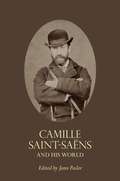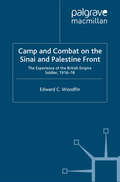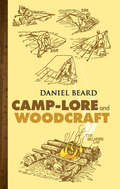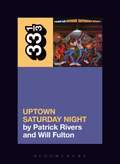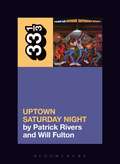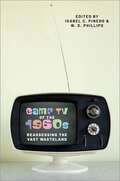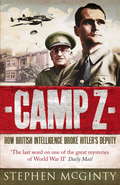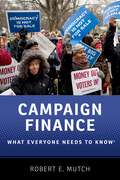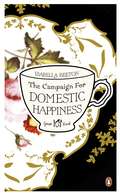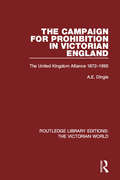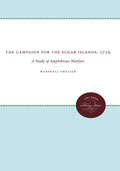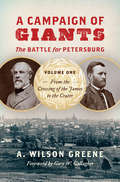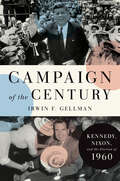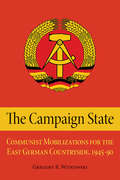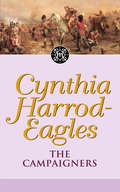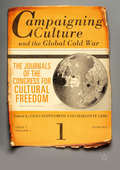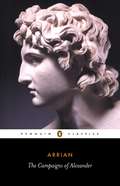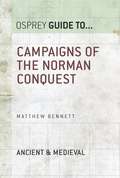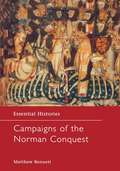- Table View
- List View
Camille Saint-Saëns and His World (The Bard Music Festival #32)
by Jann PaslerA revealing look at French composer and virtuoso Camille Saint-SaënsCamille Saint-Saëns—perhaps the foremost French musical figure of the late nineteenth century and a composer who wrote in nearly every musical genre, from opera and the symphony to film music—is now being rediscovered after a century of modernism overshadowed his earlier importance. In a wide-ranging and trenchant series of essays, articles, and documents, Camille Saint-Saëns and His World deconstructs the multiple realities behind the man and his music. Topics range from intimate glimpses of the private and playful Saint-Saëns, to the composer's interest in astronomy and republican politics, his performances of Mozart and Rameau over eight decades, and his extensive travels around the world. This collection also analyzes the role he played in various musical societies and his complicated relationship with such composers as Liszt, Massenet, Wagner, and Ravel. Featuring the best contemporary scholarship on this crucial, formative period in French music, Camille Saint-Saëns and His World restores the composer to his vital role as innovator and curator of Western music.The contributors are Byron Adams, Leon Botstein, Jean-Christophe Branger, Michel Duchesneau, Katharine Ellis, Annegret Fauser, Yves Gérard, Dana Gooley, Carolyn Guzski, Carol Hess, D. Kern Holoman, Léo Houziaux, Florence Launay, Stéphane Leteuré, Martin Marks, Mitchell Morris, Jann Pasler, William Peterson, Michael Puri, Sabina Teller Ratner, Laure Schnapper, Marie-Gabrielle Soret, Michael Stegemann, and Michael Strasser.
Camille Saint-Saëns and His World (The Bard Music Festival #32)
by Jann PaslerA revealing look at French composer and virtuoso Camille Saint-SaënsCamille Saint-Saëns—perhaps the foremost French musical figure of the late nineteenth century and a composer who wrote in nearly every musical genre, from opera and the symphony to film music—is now being rediscovered after a century of modernism overshadowed his earlier importance. In a wide-ranging and trenchant series of essays, articles, and documents, Camille Saint-Saëns and His World deconstructs the multiple realities behind the man and his music. Topics range from intimate glimpses of the private and playful Saint-Saëns, to the composer's interest in astronomy and republican politics, his performances of Mozart and Rameau over eight decades, and his extensive travels around the world. This collection also analyzes the role he played in various musical societies and his complicated relationship with such composers as Liszt, Massenet, Wagner, and Ravel. Featuring the best contemporary scholarship on this crucial, formative period in French music, Camille Saint-Saëns and His World restores the composer to his vital role as innovator and curator of Western music.The contributors are Byron Adams, Leon Botstein, Jean-Christophe Branger, Michel Duchesneau, Katharine Ellis, Annegret Fauser, Yves Gérard, Dana Gooley, Carolyn Guzski, Carol Hess, D. Kern Holoman, Léo Houziaux, Florence Launay, Stéphane Leteuré, Martin Marks, Mitchell Morris, Jann Pasler, William Peterson, Michael Puri, Sabina Teller Ratner, Laure Schnapper, Marie-Gabrielle Soret, Michael Stegemann, and Michael Strasser.
The Camomile Lawn: A Novel (Black Swan Ser.)
by Mary WesleyEscape to the Cornish cliffs in the dizzying heat of August 1939, where five cousins are making the most of the last summer of their youth.Oliver is just back from the Spanish Civil War and world-weary at only nineteen. Calypso is gorgeous, utterly selfish and determined to marry for money. Polly and Walter, brother and sister, play their cards close to their chests. Then there's little Sophie, who nobody loves. Soon the world will be swept into war again and the five cousins will enter a whirligig of sex, infidelity, love and loss, but for now they have one last, gaspingly hot summer at the house by the cliffs with the camomile lawn.A beloved bestseller from an author ahead of her time, The Camomile Lawn is a waspishly witty, devil-may-care delight.
Camp and Combat on the Sinai and Palestine Front: The Experience of the British Empire Soldier, 1916-18
by E. WoodfinDunes, sandstorms, freezing crags and searing heat; these are not the usual images of World War I. For many men from all over the British Empire, this was the experience of the Great War. Based on soldiers' accounts, this book reveals the hardships and complexity of British Empire soldiers' lives in this oft-forgotten but important campaign.
Camp-Lore and Woodcraft
by Daniel BeardKnown to millions of Boy Scouts as "Uncle Dan," Daniel Beard was also a Progressive-era reformer, a naturalist, illustrator, and author. Among his many "how-to" books is this entertaining collection of camp lore and practical notes on woodcrafting.In Camp-Lore and Woodcraft, Beard, an avid outdoorsman, provides youngsters and campers of all ages with detailed, easy-to-follow advice on building campfires for light and warmth; making a good fire for cooking; and packing, saddling, and mounting a horse. There are also some fine tips on preparing for a camping trip, choosing a camp site, and pitching a tent, plus notes on how to cut down a tree and the proper way to chop wood.First published nearly a century ago, and enhanced with more than 370 of the author's own illustrations, this engagingly written book by a man with a keen appreciation of the joys of nature will delight and instruct boys and girls with its celebration of traditional Native American lore and its helpful hints on how to safely enjoy hiking, camping, and exploring the great outdoors.
Camp Lo's Uptown Saturday Night (33 1/3)
by William Fulton Patrick RiversGeechi Suede and Sonny Cheeba are Camp Lo. These two emcees from the Bronx, NY entered the American hip hop scene with an insider slang that bewildered listeners as they radiated the look of a bygone era of black culture. In 1996, they collaborated with producer Ski and a host of other contributors to create Uptown Saturday Night, featuring the seminal single "Luchini (a.k.a. This is It).†? While other 1990s rappers referred to 1970s Blaxploitation culture, Camp Lo were self-described "time travelers†? who weaved the slang and style of a soulful past into state-of-the-art lyrical flows. Uptown Saturday Night is a tapestry of 1970s black popular culture and 1990s New York City hip hop. This volume will detail how the album's fantastic world of "Coolie High†? reflected classic films like Cooley High and the Sidney Poitier film from which the album's title is derived, and promoted vintage slang and fashion. The book features new interviews with Camp Lo, producer Ski, Trugoy the Dove from De La Soul, Ish from Digable Planets, and others, and offers musical and cultural analyses that detail the development of the album and its essential contributions to a post-soul aesthetic.
Camp Lo's Uptown Saturday Night (33 1/3)
by William Fulton Patrick RiversGeechi Suede and Sonny Cheeba are Camp Lo. These two emcees from the Bronx, NY entered the American hip hop scene with an insider slang that bewildered listeners as they radiated the look of a bygone era of black culture. In 1996, they collaborated with producer Ski and a host of other contributors to create Uptown Saturday Night, featuring the seminal single “Luchini (a.k.a. This is It).” While other 1990s rappers referred to 1970s Blaxploitation culture, Camp Lo were self-described “time travelers” who weaved the slang and style of a soulful past into state-of-the-art lyrical flows. Uptown Saturday Night is a tapestry of 1970s black popular culture and 1990s New York City hip hop. This volume will detail how the album's fantastic world of “Coolie High” reflected classic films like Cooley High and the Sidney Poitier film from which the album's title is derived, and promoted vintage slang and fashion. The book features new interviews with Camp Lo, producer Ski, Trugoy the Dove from De La Soul, Ish from Digable Planets, and others, and offers musical and cultural analyses that detail the development of the album and its essential contributions to a post-soul aesthetic.
Camp TV of the 1960s: Reassessing the Vast Wasteland
by Isabel C. Pinedo and W. D. PhillipsCamp TV of the 1960s offers a comprehensive understanding of all of the many forms camp TV took during that critical decade. In reevaluating the history of camp on television, the authors reconsider the infantilized conceptualization of sixties television, which has generally been characterized as the creative and cultural ebb between the 1950s Golden Age of television and the networks' shift to "relevance" in the early 1970s. Encompassing contributions from a broad range of media and television scholars that (re)consider programs like Batman, The Monkees, The Addams Family, Bewitched, F Troop, The Beverly Hillbillies, and Rowan & Martin's Laugh-In, chapters closely examine beloved 1960s American prime-time programs that drew significantly on aspects of camp, many of which were widely syndicated and left continuing imprints on popular culture. Other chapters consider key TV precursors from the early sixties; British camp television programs such as The Avengers; the use of musical codes to convey camp humor (even on black-and-white sets); the role that the viewing strategies of queer communities played - and continued to play even decades later; and how camp's multivalence allowed for more conservative readings, especially among older audiences, which were critical for the move to "mass camp" throughout American culture by the early seventies. Camp TV of the 1960s is essential reading for students and scholars in television studies and others interested in the history and theory of camp, the 1960s, or popular culture, as well as fans of these well-known but generally understudied television programs.
Camp TV of the 1960s: Reassessing the Vast Wasteland
Camp TV of the 1960s offers a comprehensive understanding of all of the many forms camp TV took during that critical decade. In reevaluating the history of camp on television, the authors reconsider the infantilized conceptualization of sixties television, which has generally been characterized as the creative and cultural ebb between the 1950s Golden Age of television and the networks' shift to "relevance" in the early 1970s. Encompassing contributions from a broad range of media and television scholars that (re)consider programs like Batman, The Monkees, The Addams Family, Bewitched, F Troop, The Beverly Hillbillies, and Rowan & Martin's Laugh-In, chapters closely examine beloved 1960s American prime-time programs that drew significantly on aspects of camp, many of which were widely syndicated and left continuing imprints on popular culture. Other chapters consider key TV precursors from the early sixties; British camp television programs such as The Avengers; the use of musical codes to convey camp humor (even on black-and-white sets); the role that the viewing strategies of queer communities played - and continued to play even decades later; and how camp's multivalence allowed for more conservative readings, especially among older audiences, which were critical for the move to "mass camp" throughout American culture by the early seventies. Camp TV of the 1960s is essential reading for students and scholars in television studies and others interested in the history and theory of camp, the 1960s, or popular culture, as well as fans of these well-known but generally understudied television programs.
Camp Z: How British Intelligence Broke Hitler's Deputy
by Stephen McGintyOn 10 May 1941, Rudolf Hess, then the Deputy Führer, parachuted over Renfrewshire in Scotland on a mission to meet with the Duke of Hamilton, ostensibly to broker a peace deal with the British government. After being held in the Tower of London, he was transferred to Mytchett Place near Aldershot on 20 May, under the codename of 'Z'. The house was fitted with microphones and sound recording equipment, guarded by a battalion of soldiers and codenamed 'Camp Z'.Churchill's instructions were that Hess should be strictly isolated, with every effort taken to get any information out of him that could help change the course of the Second World War. Stephen McGinty uses documentation, contemporaneous reports, diaries, letters and memos to piece together a riveting account of the claustrophobia, paranoia and high-stakes gamesmanship being played out in an English country house. CAMP Z is a 'locked room mystery' where the 'locked room' is a man's mind that no one can conclude, with any degree of confidence, is sane.
Campaign Finance: What Everyone Needs to Know® (What Everyone Needs To Know®)
by Robert E. MutchIn 2015, well over half of the money contributed to the presidential race came from roughly 350 families. The 100 biggest donors gave as much as 2 million small donors combined. Can we still say we live in a democracy if a few hundred rich families provide a disproportionate shares of campaign funds? Congress and the courts are divided on that question, with conservatives saying yes and liberals saying no. The debate is about the most fundamental of political questions: how we define democracy and how we want our democracy to work. The debate may ultimately be about political theory, but in practice it is conducted in terms of laws, regulations, and court decisions about super PACs, 527s, 501(c)(4)s, dark money, small donors, public funding, corporate contributions, the Federal Election Commission, and the IRS. Campaign Finance: What Everyone Needs to Know® explains those laws, regulations, and Supreme Court decisions, from Buckley v. Valeo to Citizens United, asking how they fit into the larger discussion about how we want our democracy to work.
CAMPAIGN FINANCE: What Everyone Needs to Know® (What Everyone Needs To Know®)
by Robert E. MutchIn 2015, well over half of the money contributed to the presidential race came from roughly 350 families. The 100 biggest donors gave as much as 2 million small donors combined. Can we still say we live in a democracy if a few hundred rich families provide a disproportionate shares of campaign funds? Congress and the courts are divided on that question, with conservatives saying yes and liberals saying no. The debate is about the most fundamental of political questions: how we define democracy and how we want our democracy to work. The debate may ultimately be about political theory, but in practice it is conducted in terms of laws, regulations, and court decisions about super PACs, 527s, 501(c)(4)s, dark money, small donors, public funding, corporate contributions, the Federal Election Commission, and the IRS. Campaign Finance: What Everyone Needs to Know® explains those laws, regulations, and Supreme Court decisions, from Buckley v. Valeo to Citizens United, asking how they fit into the larger discussion about how we want our democracy to work.
The Campaign for Domestic Happiness
by Isabella BeetonFirmly of the belief that a home should be run as an efficient military campaign, Mrs Beeton, the doyenne of English cookery, offers timeless tips on selecting cuts of meat, throwing a grand party and hosting a dinner, as well as giving suggestions on staff wages and the cost of each recipe. With such delicious English classics as rabbit pie, carrot soup, baked apple custard, and fresh lemonade - as well as invalid's jelly for those days when stewed eels may be a little too much - this is a wonderful collection of food writing from the matriarch of modern housekeeping.
The Campaign for Prohibition in Victorian England: The United Kingdom Alliance 1872-1895 (Routledge Library Editions: The Victorian World)
by Anthony E. DingleThe evils of drink were a constant preoccupation in late Victorian England. The United Kingdom Alliance, founded in 1853, fought a long and vigorous but ultimately unsuccessful campaign for prohibition. In doing so it eventually developed into one of the most powerful reformist pressure groups operating in Victorian political life. First published in 1980, this book covers in extensive detail the legislative activity of the Alliance and analyses the administration and campaign strategies involved, from its formation to the disastrous electoral defeat of the liberal party in 1895. Stressing that the phenomenon of Prohibition cannot be adequately explained purely in political terms, this study shows that the preliminary success and eventual failure of the Alliance was closely related to its nonconformist ethics and attitudes. This book will be of interest to those studying Victorian history, politics and religion.
The Campaign for Prohibition in Victorian England: The United Kingdom Alliance 1872-1895 (Routledge Library Editions: The Victorian World)
by Anthony E. DingleThe evils of drink were a constant preoccupation in late Victorian England. The United Kingdom Alliance, founded in 1853, fought a long and vigorous but ultimately unsuccessful campaign for prohibition. In doing so it eventually developed into one of the most powerful reformist pressure groups operating in Victorian political life. First published in 1980, this book covers in extensive detail the legislative activity of the Alliance and analyses the administration and campaign strategies involved, from its formation to the disastrous electoral defeat of the liberal party in 1895. Stressing that the phenomenon of Prohibition cannot be adequately explained purely in political terms, this study shows that the preliminary success and eventual failure of the Alliance was closely related to its nonconformist ethics and attitudes. This book will be of interest to those studying Victorian history, politics and religion.
The Campaign for the Sugar Islands, 1759: A Study of Amphibious Warfare (Published by the Omohundro Institute of Early American History and Culture and the University of North Carolina Press)
by Marshall SmelserIn the battle for empire that was the Seven Years' War, France's Sugar Islands, Guadeloupe and Martinique, were stakes as important as the Dominion of Canada. This book sketches the background strategy that led William Pitt to send an expedition to capture them, but it is chiefly the story of the campaign itself.Originally published in 1955.A UNC Press Enduring Edition -- UNC Press Enduring Editions use the latest in digital technology to make available again books from our distinguished backlist that were previously out of print. These editions are published unaltered from the original, and are presented in affordable paperback formats, bringing readers both historical and cultural value.
A Campaign of Giants--The Battle for Petersburg: Volume 1: From the Crossing of the James to the Crater (Civil War America)
by A. Wilson GreeneGrinding, bloody, and ultimately decisive, the Petersburg Campaign was the Civil War's longest and among its most complex. Ulysses S. Grant and Robert E. Lee squared off for more than nine months in their struggle for Petersburg, the key to the Confederate capital at Richmond. Featuring some of the war's most notorious battles, the campaign played out against a backdrop of political drama and crucial fighting elsewhere, with massive costs for soldiers and civilians alike. After failing to bull his way into Petersburg, Grant concentrated on isolating the city from its communications with the rest of the surviving Confederacy, stretching Lee's defenses to the breaking point. When Lee's desperate breakout attempt failed in March 1865, Grant launched his final offensives that forced the Confederates to abandon the city on April 2, 1865. A week later, Lee surrendered at Appomattox Court House.Here A. Wilson Greene opens his sweeping new three-volume history of the Petersburg Campaign, taking readers from Grant's crossing of the James in mid-June 1864 to the fateful Battle of the Crater on July 30. Full of fresh insights drawn from military, political, and social history, A Campaign of Giants is destined to be the definitive account of the campaign. With new perspectives on operational and tactical choices by commanders, the experiences of common soldiers and civilians, and the significant role of the United States Colored Troops in the fighting, this book offers essential reading for all those interested in the history of the Civil War.
Campaign of the Century: Kennedy, Nixon, and the Election of 1960
by Irwin F. GellmanBased on massive new research, a compelling and surprising account of the twentieth century's closest election The 1960 presidential election between John F. Kennedy and Richard Nixon is one of the most frequently described political events of the twentieth century, yet the accounts to date have been remarkably unbalanced. Far more attention is given to Kennedy's side than to Nixon's. The imbalance began with the first book on that election, Theodore White’s The Making of the President 1960—in which (as he later admitted) White deliberately cast Kennedy as the hero and Nixon as the villain—and it has been perpetuated in almost every book since then. Few historians have attempted an unbiased account of the election, and none have done the archival research that Irwin F. Gellman has done. Based on previously unused sources such as the FBI's surveillance of JFK and the papers of Leon Jaworski, vice-presidential candidate Henry Cabot Lodge, and many others, this book presents the first even-handed history of both the primary campaigns and the general election. The result is a fresh, engaging chronicle that shatters long†‘held myths and reveals the strengths and weaknesses of both candidates.
The Campaign State: Communist Mobilizations for the East German Countryside, 1945–1990
by Gregory WitkowskiCommunist regimes are defined by dictatorial power, state planning, and active propaganda machines. In The Campaign State, Gregory Witkowski explores the intersection of these three elements in East Germany by focusing on mass mobilizations. He dissects the anatomy of campaigns and argues that while mass mobilizations are often perceived as symbols of strength, they also indicate underlying systemic weaknesses. By focusing on the ability of regimes to mobilize individuals to transform society, he explains both the durability and the ultimate demise of the German Democratic Republic. This study seamlessly blends an analysis of top-down campaign initiatives with the influence of such mobilizations on the grassroots level. For more than thirty years, East German leaders doggedly extended such mobilization efforts, yet complete success remained elusive. Witkowski reveals how local leaders, campaign participants, and peasants acted in ways both compliant and noncompliant with party goals to create societal change. Campaigns became a ubiquitous part of life under communist rule. Witkowski shows that such mobilizations were initially an integral part of state-planning efforts and only later became ritualized, as party portrayals of goals and accomplishments diverged from East Germans' lived experience. He argues that incessant campaigns exposed a substantial gap between rhetoric and reality in the German Democratic Republic that undermined the regime's legitimacy. This valuable and original study will appeal to scholars and students of German history, Communism, and state planning.
The Campaigners: The Morland Dynasty, Book 14 (Morland Dynasty #14)
by Cynthia Harrod-Eagles1815: Napoleon's escape from Elba and the preparations for battle entangle the Morland family in a web of romance and heartbreak.The Allied Army is gathering in Flanders, and where the army is, the fashionable world must go- so London society hastens to Brussels to enjoy the most exhilarating Season ever. For Heloise it brings a renewed acquaintance with her former suitor, to Duc de Veslne-d'Estienne; while Rosamund must finally come to terms with her feelings for her cousin Marcus; and for Sophie, a meeting with an enigmatic French major could well alter her future.But as romance flourishes in a warlike atmosphere, the looming shadow of battle only makes the dancers whirl more feverishly, and when the Army marches out to face the might of the French at Waterloo, one question is in every heart: which of them will not come back?
Campaigning Culture and the Global Cold War: The Journals of the Congress for Cultural Freedom
by Giles Scott-Smith Charlotte A. LergThis book explores the lasting legacy of the controversial project by the Congress for Cultural Freedom, funded by the CIA, to promote Western culture and liberal values in the battle of ideas with global Communism during the Cold War. One of the most important elements of this campaign was a series of journals published around the world: Encounter, Preuves, Quest, Mundo Nuevo, and many others, involving many of the most famous intellectuals to promote a global intellectual community. Some of them, such as Minerva and China Quarterly, are still going to this day. This study examines when and why these journals were founded, who ran them, and how we should understand their cultural message in relation to the secret patron that paid the bills.
The Campaigns of Alexander
by Aubrey De Selincourt Arrian J. HamiltonAlthough written over four hundred years after Alexander's death, Arrian's account of the man and his achievements is the most reliable we have. Arrian's own experience as a military commander gave him unique insights into the life of the world's greatest conqueror. He tells of Alexander's violent suppression of the Theban rebellion, his defeat of Persia and campaigns through Egypt and Babylon - establishing new cities and destroying others in his path. While Alexander emerges as a charismatic leader, Arrian succeeds brilliantly in creating an objective portrait of a man of boundless ambition, who was exposed to the temptations of power.
Campaigns of the Norman Conquest (Guide to... #12)
by Matthew BennettThis book provides a full introduction to the Norman Conquest, an event which resulted in dramatic changes to the nation's aristocracy, church and administration. It brought a new language and cultural influences and revolutionised military architecture with the introduction of the castle. This profound impact was not brought about as the result of a single battle and it took a five-year war for William to establish control over his new kingdom. The campaigns are studied in detail, with maps showing how William's energy and strategic intelligence enabled him to defeat his formidable opponents and create a new order.
Campaigns of the Norman Conquest (Essential Histories #12)
by Matthew BennettFirst Published in 2003. Routledge is an imprint of Taylor & Francis, an informa company.
Campaigns of the Norman Conquest (Essential Histories)
by Matthew BennettFirst Published in 2003. Routledge is an imprint of Taylor & Francis, an informa company.
